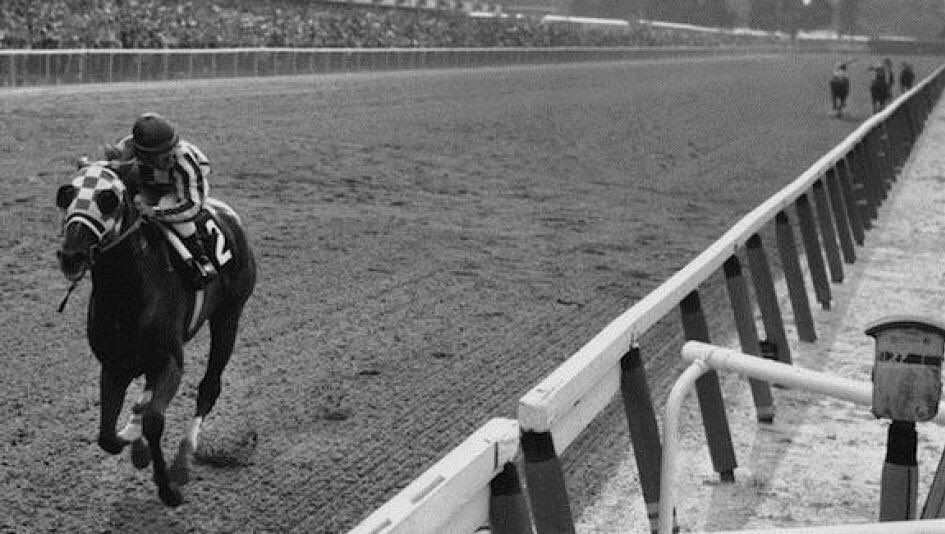The Belmont Stakes was held for the first time in 1868, marking it the oldest of the three Triple Crown races. August Belmont Sr., a famous New York City industrialist, was the race’s financial sponsor. However, the initial event did not take place at the Elmont track, where the competition is now hosted. Instead, the event took place at the Bronx’s Jerome Park. Jerome Park is named after another New York City business genius, Leonard Jerome.
Also read: Belmont Stakes 2022: All you need to know about the Belmont Park track
The race was run in the Bronx until 1890, when it was transferred to the adjacent Morris Park Race Course. It continued there until 1905, when the Belmont Stakes moved to the newly built Belmont Park track in the town of Elmont. The event has stayed on Long Island to this day. However, the race has not been continuous, as it was suspended in 1911 and 1912 due to New York State’s brief prohibition on horse racing betting.
The evolution of the Triple Crown
Gallant Fox was the first horse to win all three major races (the Kentucky Derby, the Preakness, and the Belmont Stakes) in 1930. Nonetheless, the phrase “Triple Crown” did not become popular until 1935, when Omaha (son of Gallant Fox) repeated his three-race success. Following Omaha’s victory, the Triple Crown became a household term.
Also read: Belmont Stakes 2022: Racing odds, picks for the ‘test of the Champion’
The distance between the three races has not varied. However, prior to the 1930s, race dates changed, and on a few unusual occasions, the Preakness and Belmont Stakes took place on the same day, making a Triple Crown triumph improbable.
Challenges of racehorse transportation
Another impediment to the establishment of the Triple Crown was horse transportation; prior to the introduction of the internal combustion engine, hauling a horse by train was both expensive and inefficient. As a result, owners did not take their horses too far away from home to partake in a race.
The Longest Yard explained
The Belmont Stakes is known as “The Test of Champions” because of its extra 1/4 mile in length. The two additional furlongs (eight furlongs in a mile) transform this event into a test of stamina and persistence. Unlike the Derby and Preakness, which test a horse’s speed, the Belmont Stakes allows fans to judge whose jockey can best pace their steed on the longer route around the course.
Also read: Belmont Stakes 2022: Purse, prize money breakdown of the race
What exactly is a furlong?
Even if you’ve only watched a few horse races, you’ve probably heard the term “furlong” at least once or twice. If you’re wondering where the term came from, it comes from mediaeval England, where an acre was defined as a furlong wide and a furlong long. Because a mile is eight furlongs long, a square mile is 64 acres in size, with each acre measuring 220 by 220 yards. Today, the term “furlong” is virtually solely used in horse racing.
The Incredible Victory of Secratariat in the 1973 Belmont Stakes
Secratariat was neck-and-neck with Sham in a race in 1973, at least for the first part of the event. Then Secretariat dominated the race, leaving Sham in the dust and winning by more than 30 lengths. The horse set a record for twelve furlongs on a dirt track in the process, which still holds today. Since then, every Belmont Stakes race has been compared to Secretariat’s historic victory. So yet, no horse has even come close.
Also read: Belmont Stakes 2022: All you need to know about the horses
Horses can now fly
Horses are now flown from race to race, frequently arriving a few days before a major event like the Belmont Stakes. Because of the realities of equestrian travel, it is significantly easier for a horse to compete in all three events. There are even dedicated planes designed for horse travel that can transport up to 20 racehorses at once. Given that a thoroughbred weighs between 1,000 and 1,300 pounds, they are reasonably big cargo planes.
Another benefit of equestrian air travel is that the Triple Crown has become an international event, with horses travelling from as far away as Saudi Arabia or South Africa to compete for the roses, black-eyed Susans, or carnations.







